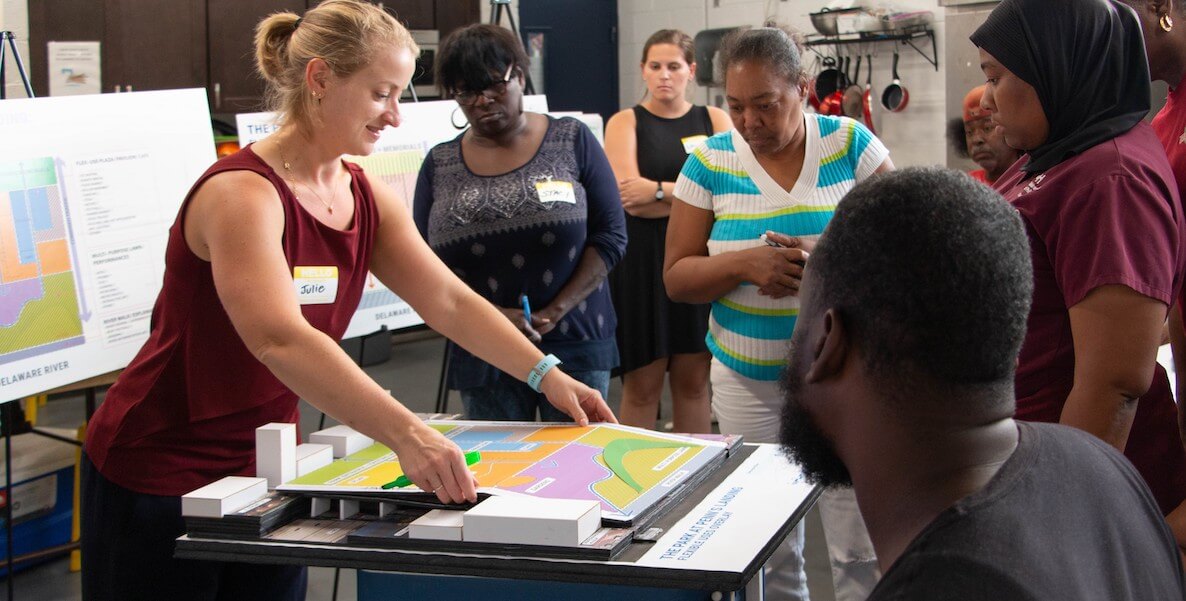Early in September 2023, Mayor Kenney, Governor Shapiro, and assorted dignitaries assembled in a tent on the plaza at Penn’s Landing and raised ceremonial shiny shovels, turning the first bits of soil for the symbolic groundbreaking of the long-awaited I-95 CAP project. More recently, ceremony has given way to active construction: the demolition of the Chestnut Street bridge over Penn’s Landing and the temporary relocation of the Irish and Scottish Memorials.
The ambitious centerpiece of the Master Plan for the Central Delaware involves the construction of a $330 million, 11.5-acre cap that will stretch across Columbus Boulevard and I-95 from Front Street to the river, from Chestnut Street to Walnut Street. A new riverfront park and urban beach larger than Rittenhouse Square will top the cap — becoming, in the words of Councilman Mark Squilla, a “new sixth square” for Philadelphia. The site will also arguably be the largest new public space infrastructure investment in the city in decades.
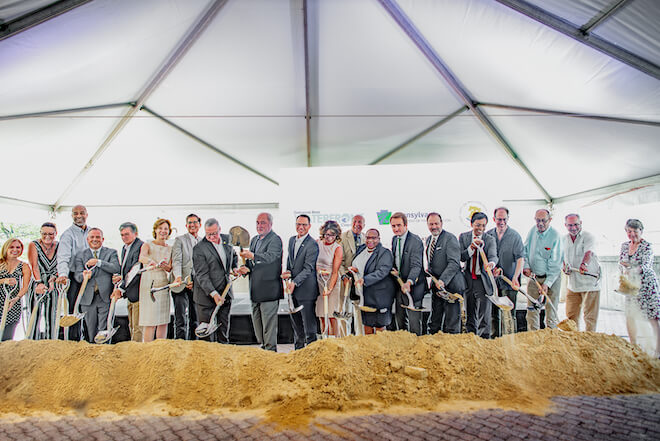
In addition, the park lid will reconnect Philadelphia’s riverfront with its historic district. Soon, residents and visitors standing at Independence Hall will be able to turn east and walk directly to the Delaware River without noticing they are crossing over 600 feet of city streets and interstate highway.
At one level, the project represents a successful alignment of city and state political leadership and financial resources toward the creation of a new public space investment that is likely to spark hundreds of millions, if not billions, of follow-on private investment in the form of new riverfront residential development. And this new regional public amenity would not have been possible without the support of current and past gubernatorial and mayoral administrations. But, like most large and complicated projects, the story behind this significant accomplishment is itself complex, involving intentional, committed, long-term community engagement.
As an early and continuing supporter and observer of the community engagement, planning and project development that led to the I-95 CAP project, the William Penn Foundation feels there are important lessons and practices that could be useful in developing and executing other big projects and initiatives in our city, region and elsewhere. These lessons are especially useful as community opposition, complex environmental regulatory review and soaring costs make launching and completing major public infrastructure projects increasingly daunting.
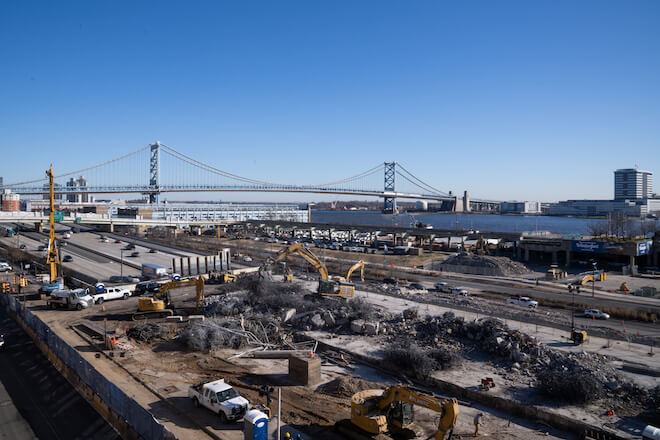
Creating a client, not a plan
The I-95 CAP is the culminating project of a civic visioning process that engaged thousands of residents in 2007. Harris Steinberg and Michael Greenle, then on staff of Penn Praxis of Penn’s Graduate School of Design, led the effort, and the William Penn Foundation sponsored the civic visioning process to help protect this incredibly sited land from increasingly prevalent auto-oriented, anti-pedestrian development along the Delaware Riverfront.
The Foundation understood that changing the trajectory of redevelopment along a large swath of the city’s riverfront that is largely in private ownership would require more than just a good plan or excellence in urban design. Capping I-95 demanded a solid foundation of community involvement and sustained public support over the inevitable period of years required to execute large public works.
Our main aim: Stimulate resident and community demand for a better plan for the riverfront — create a client for better planning. The executive order Mayor Street signed in early 2007 launched a decade-and-a-half of public engagement, planning, and construction of $500 million of public space investments, specifically empowering a steering committee of 45 groups, including neighborhood and community groups, nonprofits, various area chambers of commerce, and multiple city government agencies to provide community and civic leadership and oversight.
The hardest part of achieving positive change is finding and supporting good leaders who can make that change happen.
The initial visioning process led 20 neighborhood group and nonprofit members of the steering committee to self-organize into Central Delaware Advocacy Group (CDAG). “The waterfront planning process was unprecedented in its level of public engagement,” says Matt Ruben, a founding member of CDAG and the group’s chair for the past decade.
“We realized the process would not succeed without sustained public advocacy and long-term follow-through,” he says, “CDAG has kept the public interest front and center ever since. As a result, we have helped make the master plan a reality. We would not have been able to do that — we would not even exist as a group — if the visioning process had not been so uniquely inclusive and empowering of everyday Philadelphians.”
Currently in its 16th year, CDAG continues to be an influential civic leadership organization on behalf of the Central Delaware Waterfront and the principles of the Master Pan — testifying to the potential of fully realized resident involvement and community engagement.
Vision first, plan later
This success was by design. Early on, Penn Praxis and the William Penn Foundation worked together to study and explore different models and approaches from across the county for a citizen-led riverfront redevelopment effort. The best advice we received was not to immediately pursue a land use plan or new zoning rules for the riverfront, but rather to support a vision that would capture and encompass the aspirations, desires and preferences of waterfront communities.
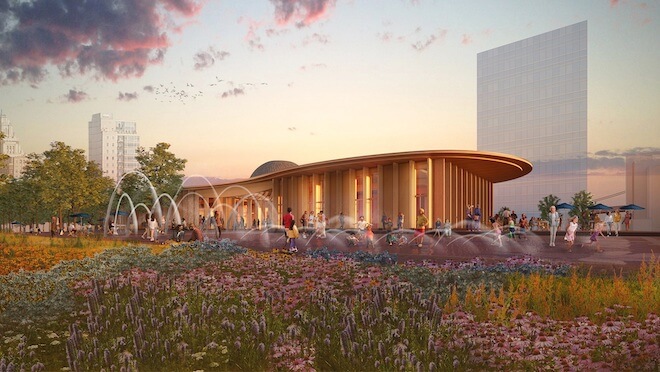
The genius of that advice is that instead of forcing an immediate confrontation with granular decisions and specific questions about what should happen where — which could have quickly derailed the process almost at the start — it encouraged waterfront residents to have thoughtful, productive conversations about shared values. The result: a strong unity of opinion and public momentum that would drive the vision forward towards.
The seven key principles that the community-informed Civic Visioning process are startling in their wisdom and clarity. They embody a range of practical actions, like extending the city’s pedestrian-scaled street grid to the river’s edge, and designing with nature to ensure harmonious and sensitive connections between the riparian environment and new development. The principles were also aspirational, encouraging a focus on a bolder, longer view over short-term gains, to make the riverfront a “real” Philadelphia place that builds on the city’s history while helping to set the stage for a better future.
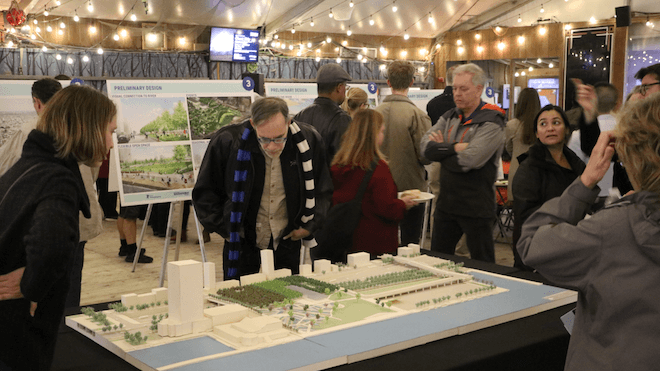
Transparent and strong public management
At the William Penn Foundation we often say that our grants pay for things, but they are really investments in leadership. We know from much experience that it’s easy to come up with good ideas, and that somehow the money can eventually be found, but that the hardest part of achieving positive change is finding and supporting good leaders who can make that change happen.
For the Central Delaware Riverfront redevelopment, the city was fortunate to have two such leaders. Tom Corcoran who created and founded the Coopers Ferry Development Corporation in Camden in the 1980s became first CEO of the Delaware River Waterfront Corporation (DRWC). After scandal plagued earlier redevelopment efforts, Corcoran brought instant credibility and integrity. Joe Forkin, an outstanding redevelopment expert and city leader who has succeeded in fully delivering on the promise of the Civic Vision, succeeded Corcoran.
Through the process to create a formal land use master plan in 2012 to implement and operationalize the ideas of the Civic Vision, both men have committed to and invested in continuous community engagement and a high degree of decision-making transparency. This dedication didn’t always translate into 100 percent agreement on all things, but it did engender overall trust for the process, an understanding of why decisions were made, and the feeling that everyone had been heard.
Single and doubles — the value of short-term wins
Delivering large public infrastructure projects in the U.S. takes a long time. Nearly 16 years elapsed between the civic visioning process and the groundbreaking for the I-95 CAP. The need to accelerate the delivery of infrastructure is a topic for another day, but even with streamlining of regulatory and environmental permitting processes, community engagement, excellence in engineering and design, and construction take time. The development of large projects can often extend beyond the terms of local and state leaders who initiated them.
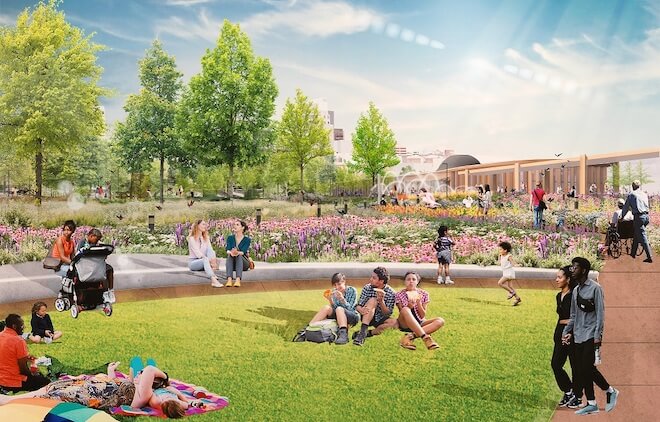
To maintain public interest and support for big plans and big ideas over their long gestation, stakeholders must salt those plans with early wins; smaller, easier to execute projects can represent a downpayment for larger, more complex investments. This was the playbook for the implementation of the Master Plan for the Central Delaware, which envisioned a series of initial projects, such as new public parks like Race Street Pier and Washington Avenue Green, initial stretches of new riverfront trails, and connector streets to improve pedestrian access to the riverfront.
The almost routine delivery of these many initial projects — which the team at DRWC refer to as “singles and doubles” over the years — generated public confidence that the big stuff would get done. Small wins represented a proof of concept for a new, higher level of quality in the design of public space in Philadelphia.
Honoring and empowering the vision
Because of its scale and complexity, the full construction of the project will take about 4 to 5 years. But the I-95 CAP will be worth the wait. It will also serve as a stunning reminder that we can still get the big stuff done. The way ahead is clear: We can accomplish great things by combining meaningful and authentic citizen engagement and visioning with strong and transparent public management and tactical early wins to build sustained public support for an ambitious, community-based vision for the future of our city.
Shawn McCaney is the Executive Director of the William Penn Foundation, a member of the American Institute of Certified Planners, and an international member of the Canadian Institute of Planners. A licensed professional planner in New Jersey, he also serves as the Chairman of Haddonfield Planning Board.
The Citizen welcomes guest commentary from community members who represent that it is their own work and their own opinion based on true facts that they know firsthand.
![]() MORE ON INFRASTRUCTURE INVESTMENT FROM THE CITIZEN
MORE ON INFRASTRUCTURE INVESTMENT FROM THE CITIZEN



